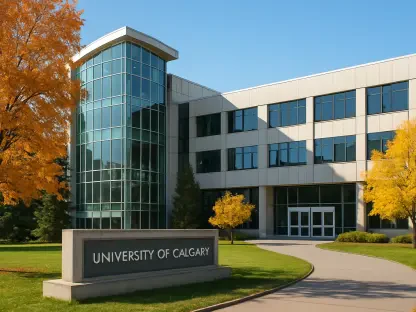At Johns Hopkins University, the intersection of student dining and health concerns has become a focal point for campus dialogue, reflecting broader challenges faced by students in balancing nutrition, affordability, and well-being while navigating the demands of academic life. Recently, a significant meeting hosted by the Student Government Association (SGA) brought together representatives from Hopkins Dining and Student Health and Well-Being (SHWB) to tackle these pressing issues. The discussions revealed deep-seated frustrations among students, ranging from rising meal plan costs to lengthy wait times for mental health support. Yet, amidst these challenges, a commitment to collaboration and improvement emerged as a central theme. Both university entities demonstrated a willingness to adapt and respond to feedback, setting the stage for meaningful changes. This gathering not only highlighted the complexities of managing campus services but also underscored the importance of student voices in shaping solutions that directly impact daily life on campus.
Tackling Dining Challenges with Transparency and Innovation
Concerns about dining services at Johns Hopkins have centered on meal plan pricing, food availability, and the diversity of options, particularly at key locations like Charles Street Market. Students have voiced frustration over consistent price increases, prompting Hopkins Dining to offer clarity on the issue. Unlike large chains that benefit from bulk discounts, the university must adhere to manufacturer-suggested retail prices, a reality compounded by post-pandemic inflation and supply chain disruptions. Beyond costs, the scarcity of certain offerings, such as vegetarian dishes running out early, has been a recurring complaint. In response, Hopkins Dining has adjusted ordering quantities to better align with evolving student preferences. The removal of late-night dining at Hopkins Cafe, attributed to low turnout, remains a point of contention, though officials have expressed openness to revisiting this decision if sustainable solutions are identified. These efforts reflect a balancing act between operational constraints and student needs, with a clear intent to improve the dining experience through ongoing adjustments.
Further strides in dining enhancements are underway, showcasing a proactive approach to addressing student feedback. At Charles Street Market, the introduction of a new vendor marks a step toward greater variety, with plans to expand hot meal options in the near future. Additionally, upcoming projects promise to transform the dining landscape on campus. The Agora Cafe at the SNF Agora Institute and a new dining hall in the AMR I building are set to offer significant upgrades, including over 600 seats, late-night to-go options, and an order-ahead sandwich bar. Hopkins Dining has also emphasized the value of direct student input, encouraging feedback to refine services further. This openness to dialogue, paired with tangible developments, suggests a forward-thinking strategy aimed at not only resolving current grievances but also anticipating future needs. While immediate fixes for pricing frustrations may remain elusive due to external economic factors, these initiatives indicate a long-term commitment to enhancing accessibility and satisfaction in campus dining.
Enhancing Student Health and Well-Being Services
Turning to health and well-being, Johns Hopkins students have raised critical concerns about mental health support, health literacy, and access to essential resources like menstrual products. Long wait times for mental health appointments have been a persistent issue, often leaving students without timely care. To address this, SHWB has rolled out innovative programs such as Solution Sessions, which provide 50-minute, one-on-one problem-solving meetings in a condensed timeframe. Additionally, the integration of TimelyCare services aims to cut average wait times from two weeks to just one, offering a more responsive framework for support. These measures highlight an adaptive approach to mental health care, acknowledging the urgency of student needs while working within systemic limitations. By prioritizing quicker access to counseling, SHWB seeks to alleviate some of the stress associated with delayed assistance, ensuring that students feel supported during critical moments.
Beyond mental health, SHWB is also focusing on broader aspects of student wellness through improved outreach and resource management. On the topic of health literacy, existing tools like blogs that guide students through navigating insurance systems are being supplemented with plans for expanded workshops to boost awareness and understanding. Meanwhile, inconsistencies in the restocking of menstrual health products across campus facilities have prompted calls for better oversight. SHWB has clarified that individual locations manage their own supplies and has urged students to report areas frequently running low to rectify gaps in availability. This responsive stance underscores a dedication to addressing practical, everyday needs that impact student life. While challenges persist in fully streamlining these services, the combination of educational initiatives and direct problem-solving mechanisms reflects a comprehensive effort to foster a healthier campus environment where students can thrive both academically and personally.
Reflecting on Progress and Future Steps
Looking back, the recent SGA meeting at Johns Hopkins University stood as a pivotal moment for dialogue between students and campus service providers. The candid discussions with Hopkins Dining and SHWB revealed a shared resolve to confront issues head-on, whether through adjusting food orders to meet dietary demands or launching programs to expedite mental health care access. The inauguration of new SGA members, including the Freshman Class President and council representatives, also marked a fresh chapter of advocacy, ensuring that student perspectives continue to drive change. Moving forward, the emphasis on direct communication emerged as a cornerstone for progress. Both entities encouraged ongoing feedback to fine-tune their approaches, while planned projects like new dining facilities offered a glimpse of transformative potential. As these efforts unfold, sustained collaboration between students and university services will be essential to turn incremental gains into lasting improvements, paving the way for a campus experience that prioritizes both nourishment and well-being.









